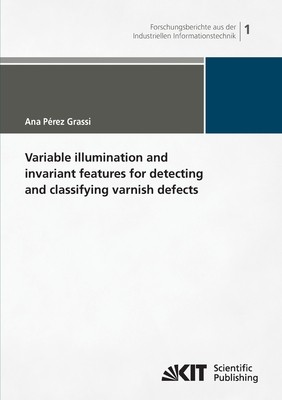
- We will send in 10–14 business days.
- Author: Ana Pérez Grassi
- Publisher: Karlsruher Institut für Technologie
- ISBN-10: 3866445377
- ISBN-13: 9783866445376
- Format: 14.8 x 21 x 0.9 cm, softcover
- Language: English
- SAVE -10% with code: EXTRA
Variable illumination and invariant features for detecting and classifying varnish defects (e-book) (used book) | bookbook.eu
Reviews
Description
This work presents a method to detect and classify varnish defects on wood surfaces. Since these defects are only partially visible under certain illumination directions, one image doesn't provide enough information for a recognition task. A classification requires inspecting the surface under different illumination directions, which results in image series. The information is distributed along this series and can be extracted by merging the knowledge about the defect shape and light direction.
EXTRA 10 % discount with code: EXTRA
The promotion ends in 20d.17:04:17
The discount code is valid when purchasing from 10 €. Discounts do not stack.
- Author: Ana Pérez Grassi
- Publisher: Karlsruher Institut für Technologie
- ISBN-10: 3866445377
- ISBN-13: 9783866445376
- Format: 14.8 x 21 x 0.9 cm, softcover
- Language: English English
This work presents a method to detect and classify varnish defects on wood surfaces. Since these defects are only partially visible under certain illumination directions, one image doesn't provide enough information for a recognition task. A classification requires inspecting the surface under different illumination directions, which results in image series. The information is distributed along this series and can be extracted by merging the knowledge about the defect shape and light direction.


Reviews